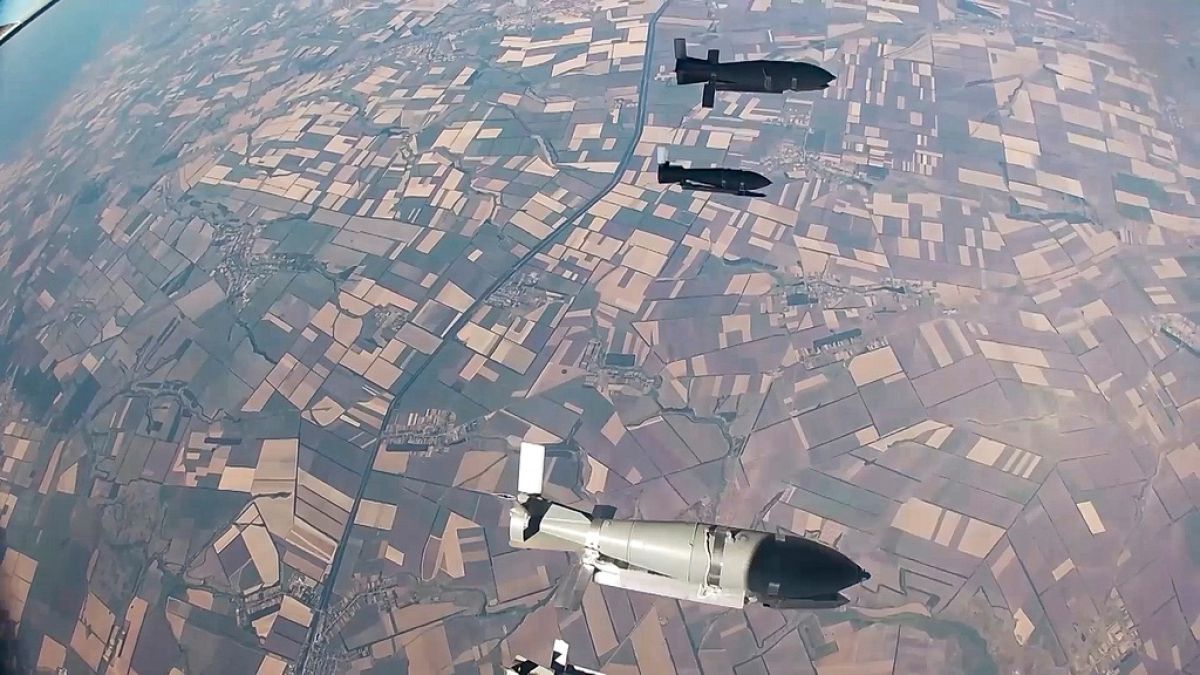Russia carried out a heavy aerial attack on Ukraine for the third time in four days, primarily intercepted by Ukraine’s air force. This attack involved firing five missiles and 74 Shahed drones at Ukrainian targets, with two missiles and 60 drones being stopped by air defenses. Debris from destroyed drones fell in three districts of Kyiv, causing minor damage but no injuries. The continuous long-range strikes on civilian areas have been a prominent feature of the conflict since Russia’s invasion of Ukraine in February 2022. Ukrainian officials are urging Western allies to remove restrictions on targeting Russian infrastructure with provided long-range weapons.
Ukrainian President Volodymyr Zelenskyy has been vocal in his calls for international support to expand their targeting capabilities within Russia. He emphasizes the importance of lifting restrictions on long-range strikes to bring a swifter end to the war in a fair manner for Ukraine and the global community. The European Union’s top diplomat has expressed support for Zelenskyy’s efforts to end limitations on Ukraine’s military operations. Ukraine has also begun deploying domestically produced drones in retaliation against Russian attacks.
On the other side, the Russian military claims to have thwarted an attempted attack on Crimea, destroying three Ukrainian sea drones aimed at the Black Sea peninsula. The governor of Sevastopol reported that additional Ukrainian drones were destroyed at a significant distance from the peninsula’s shore. Ukraine’s Army General Staff has acknowledged launching strikes on Russian oil depots in the Rostov and Kirov regions to disrupt logistical support for Russia’s war efforts. Russian media reports that the Rostov region is on high alert due to burning fuel from the attacks.
The conflict between Russia and Ukraine continues to escalate, with both sides engaging in heavy aerial attacks, missile firings, and drone warfare. The relentless attacks on civilian areas have led to widespread destruction and casualties. Ukraine’s calls for international support to lift restrictions on targeting Russian infrastructure highlight the urgent need for broader military capabilities. The use of domestically produced drones by Ukraine is a strategic response to Russian aggression and showcases the country’s determination to defend itself.
The Russian military’s claims of thwarting attacks on Crimea and destroying Ukrainian drones underscore the ongoing tensions in the region. The destruction of oil depots in Russia by Ukrainian forces indicates a shift towards disrupting logistical support for the Russian military. The situation remains volatile, with both sides engaging in strategic military operations to gain an advantage. The international community’s response to the conflict, especially regarding lifting restrictions on Ukraine’s targeting capabilities, will play a crucial role in shaping the outcome of the war.
In conclusion, the recent heavy aerial attacks and drone warfare between Russia and Ukraine highlight the escalating conflict in the region. The calls for international support to expand Ukraine’s targeting capabilities and the use of domestically produced drones demonstrate the country’s determination to defend itself against Russian aggression. The destruction of oil depots in Russia and the Russian military’s efforts to thwart attacks on Crimea emphasize the strategic complexities of the conflict. The international community’s response to the conflict, particularly in lifting restrictions on Ukraine’s military operations, will be vital in determining the outcome of the war and restoring peace in the region.








